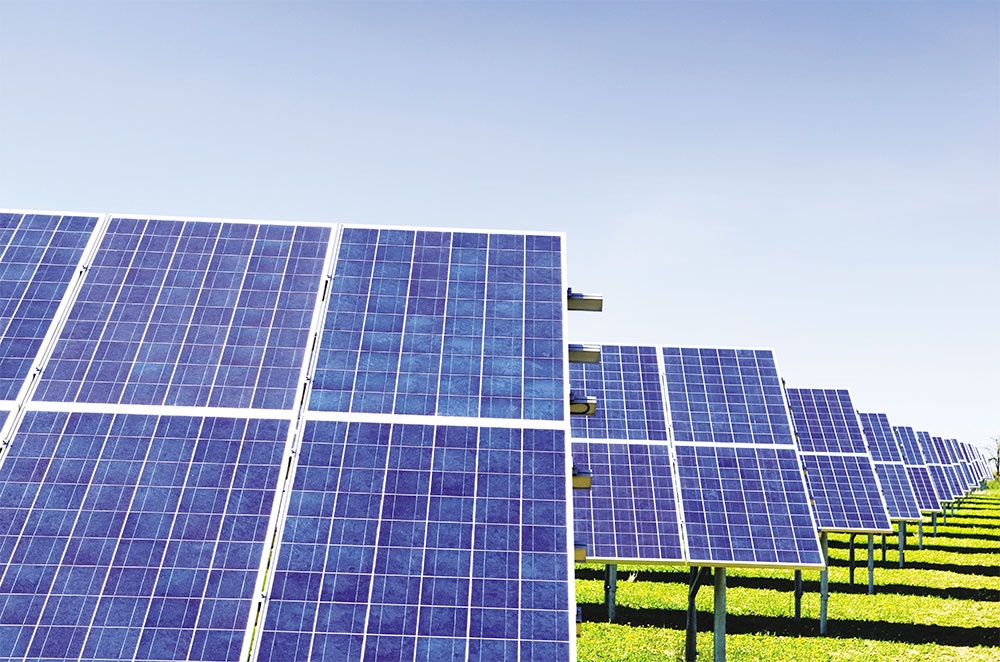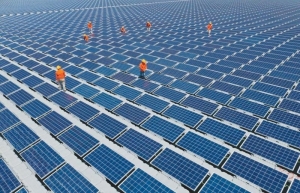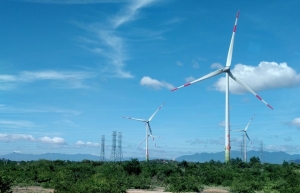Vietnam’s further evolving regulations and policies on energy
Firstly, on November 11, the Ministry of Industry and Trade (MoIT) submitted its amended proposal to the prime minister on the nation’s Power Development Plan VIII (PDP8) for the period 2021-2030, with a vision to 2050.
A few weeks previously, the State Auditor issued its findings of its audit of the MoIT. At the start of October, the MoIT issued Circular No.15/2022/TT-BCT regulating the mechanism to calculate the ranges of generating electricity tariff for transitional wind and solar power plants, which will take effect on November 25.
The proposed PDP8 generally does not intend to add new solar power projects until 2030. According to the proposed PDP8, six projects which have been completed but are awaiting the new tariff regime (total 452.6MW); and five projects which are under development (total 273.4MW) are permitted to continue to be developed and achieve commercial operation before 2030.
 |
| Vietnam’s further evolving regulations and policies on energy, photo Shutterstock |
The following solar power projects are not permitted to continue before 2030 or are cancelled: 12 projects which have been granted investment in-principal approvals but have not obtained feasibility study appraisals nor land lease decisions (1,634MW); 27 projects for which investors have not been appointed (4,136MW); and three projects of which investors have officially withdrawn (60MW).
Under Circular 15, transitional power plants include two main aspects. The first is solar power plants under power purchase agreements (PPAs) of which were executed through Electricity of Vietnam (EVN) before January 2021 but which did not achieve commercial operation in time to be eligible for the incentive feed-in tariffs (FiTs).
The second involves wind power plants under PPAs of which were executed with EVN before November 2021 but which did not achieve commercial operation in time to be eligible for the incentive FiTs. Circular 15 does not apply to rooftop solar ventures.
Tariff range provisions
According to Circular 15, the tariff ranges of the transitional power plants is a range of values from a minimum value of 0VND/kWh to the ceiling tariff corresponding to each type of the transitional power plants. The tariff ranges would be determined in VND, which would not be adjusted with fluctuations of the exchange rate.
A standard power plant, defined as having installed capacity of 50MWp (for solar power) or 50MW (for wind power), is used to provide a standardised set of data to calculate the ceiling tariff in the tariff range for each piece of technology.
In October 2022, EVN EPTC, as authorised by EVN, dispatched requests to 293 project investors who have signed PPAs with EVN, asking for early provision of required data and information for purpose of computation of the tariff ranges.
The total rooftop solar capacity which is in commercial operation as at the end of 2020 is 7,755MW (with PPAs signed with EVN). According to the proposed PDP8, enterprises and individuals are encouraged to develop rooftop solar for self-consumption, but not to sell onto the national grids. Therefore, according to the draft PDP8, EVN will no longer purchase rooftop solar electricity and the rooftop solar capacity (purchased by EVN) will be maintained at the same level of 7,755MW until at least 2030.
Through the aforementioned State Auditor findings of its audit of the MoIT, it concluded that it contradicts the laws of Official Letter No.7088/BCT-DL to guide that it is acceptable for investors to develop multiple 1MW rooftop solar systems on the same parcel of land or rooftop; and that each such rooftop solar system may enter into a separate PPA and is eligible for exemption of the electricity operation licence.
The State Auditor concluded that the above guidance would enable investors to divide their solar power project into multiple 1MW systems to avoid master plan approvals and the electricity operation licence requirements. The State Auditor’s conclusion will likely lead to further policy developments with respect to rooftop solar systems, which previously signed PPAs with EVN, requiring continued monitoring.
Meanwhile, according to the proposed PDP8, wind power is prioritised and will be increased from the current operating capacity of 4,126MW (out of a total capacity of 8,171MW of wind power projects which have signed PPAs with EVN) to 21,480MW for onshore wind and 7,000MW for offshore wind.
As for liquefied natural gas (LNG) ventures, the proposed PDP8 only adds five new projects with a total capacity of 6,600MW, all located in the north of Vietnam. These include three coal-fired power projects being converted to LNG-to-power projects with a total capacity of 3,600MW. Accordingly, by 2030, the total capacity of generation out of imported LNG is set to be 24,500MW.
 | Ministry of Industry and Trade may issue renewable energy price framework in late November The Ministry of Industry and Trade (MoIT) is expected to complete the appraisal of the new renewable energy price framework on November 25-30, which is a basis for Electricity of Vietnam (EVN) to negotiate the specific price with the investors. |
 | SK E&S sets solid footprint in renewable energy SK E&S, South Korea's largest private renewable energy operator, signed an agreement to buy a 99.99 per cent stake in New Renewable Energy JSC No.1, which is a subsidiary of Gia Lai Power Electricity JSC to set a foot in the renewable energy sector in Vietnam. |
 | Eaton contributes to Vietnam’s low-carbon economy On November 9, Eaton's Tech Day was held in Hanoi, showcasing the company's innovative products and high-tech solutions. Jimmy Yam, Eaton's vice president, Electrical Sector for East Asia, talks to VIR's Linh Le about current trends in energy management and the company's investment focus in Vietnam. |
What the stars mean:
★ Poor ★ ★ Promising ★★★ Good ★★★★ Very good ★★★★★ Exceptional
Related Contents
Latest News
More News
- Heavy industries set for pilot greenhouse gas quotas (December 25, 2025 | 10:00)
- Swedfund invests in MSME growth and climate action in Vietnam (December 19, 2025 | 11:42)
- GreenYellow brings solar energy to light up remote schools in Tuyen Quang province (December 19, 2025 | 08:00)
- Charge+, Grab partner to develop EV charging network in Vietnam (December 18, 2025 | 17:11)
- Linking sci-tech and innovation to Vietnam’s net-zero future (December 18, 2025 | 14:31)
- Driving double-digit growth through green and circular transformation in Vietnam (December 17, 2025 | 09:00)
- Standard Chartered and ACCA deepen collaboration to develop Vietnam’s talent for a sustainable future (December 15, 2025 | 18:18)
- Schaeffler reports strong early output from Dong Nai solar project (December 12, 2025 | 15:16)
- Forestry conference highlights biodiversity and sustainability goals (December 09, 2025 | 13:35)
- Home Credit honoured among top 10 sustainable companies in trade and services (December 09, 2025 | 12:18)

 Tag:
Tag:



















 Mobile Version
Mobile Version